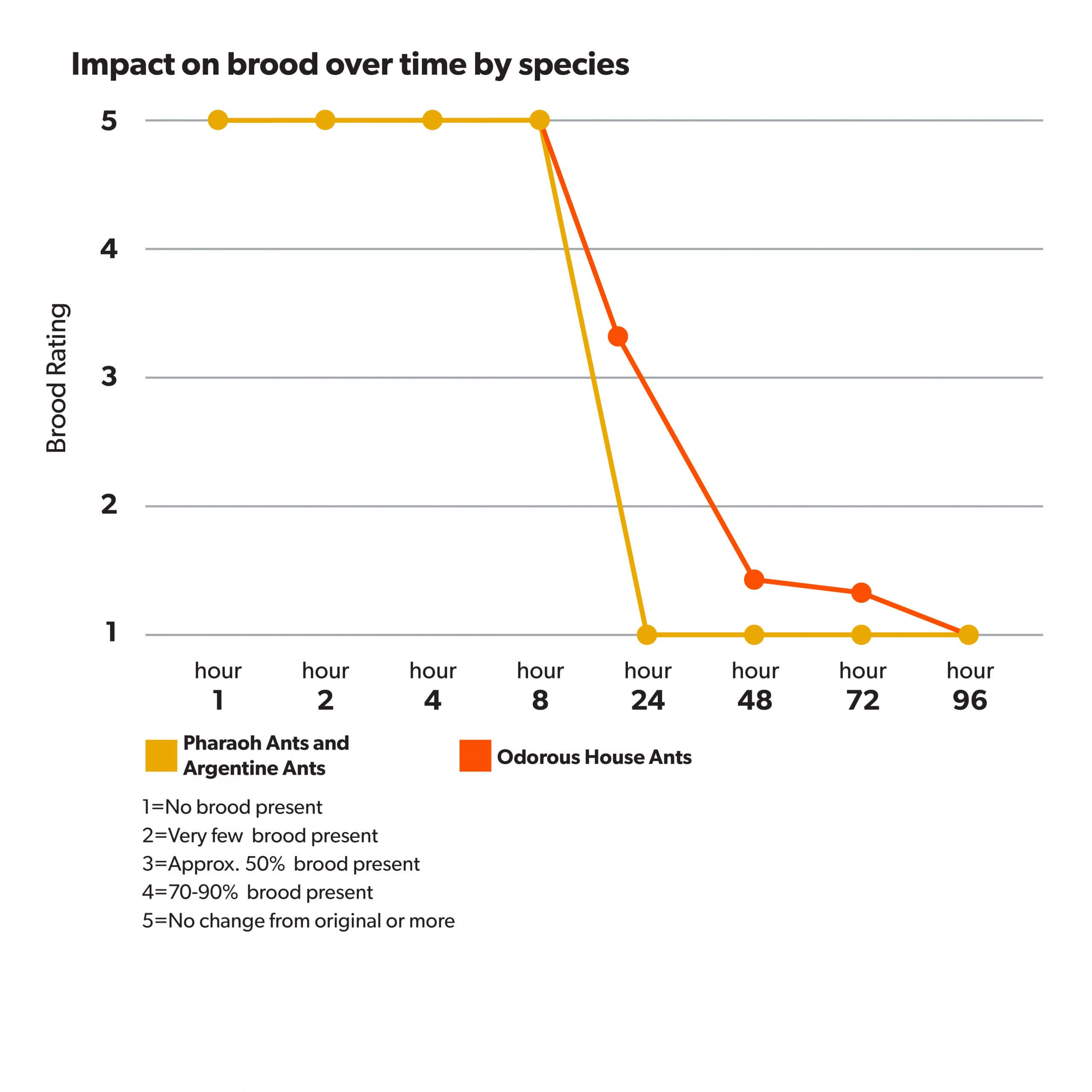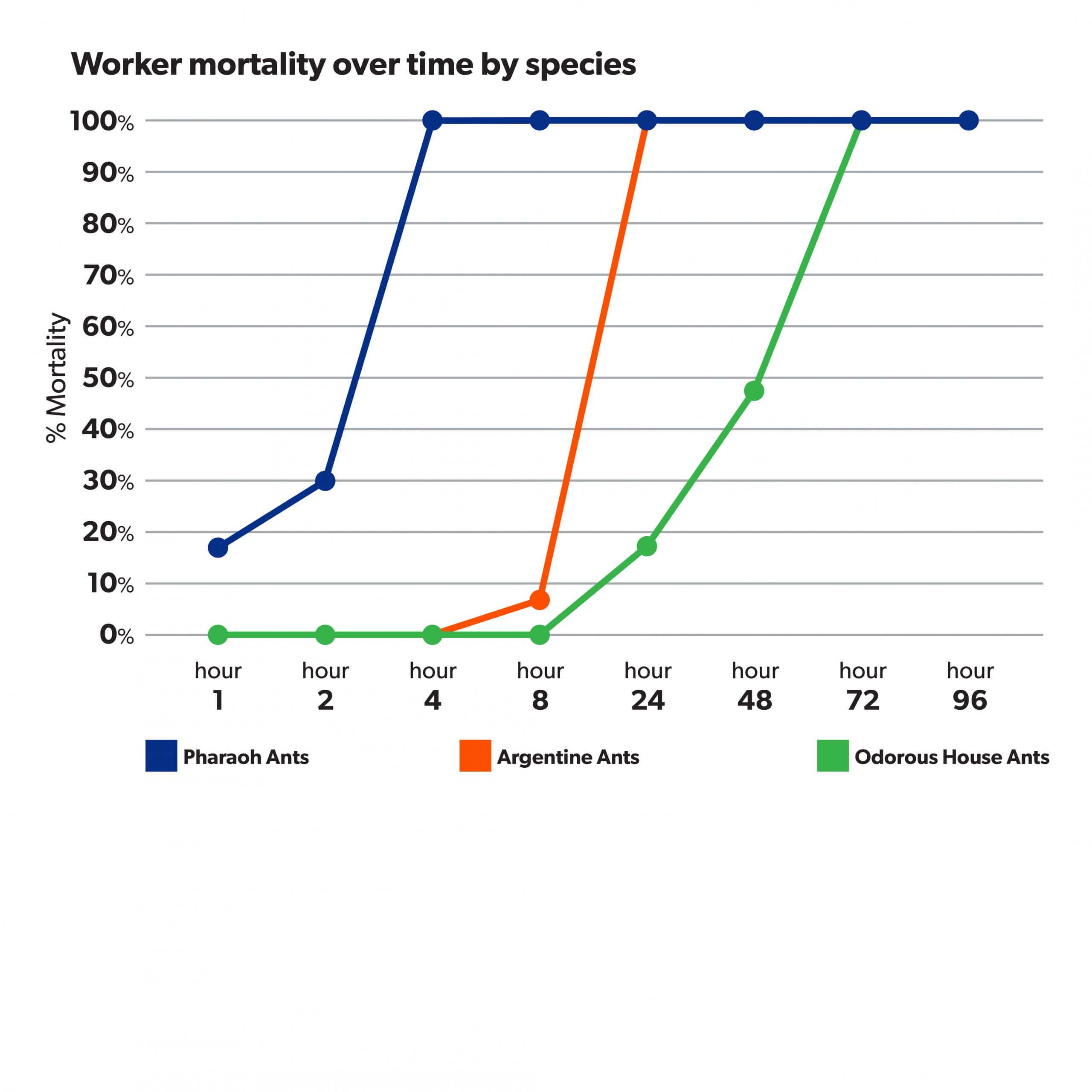Features & Benefits
- Convenient all-in-one product
- Kills wide variety of labeled pests, including cockroaches, ants and fleas
- Contains proven NyGuard® IGR (insect growth regulator) for dual modes of action
- Labeled for use in commercial kitchens and food handling facilities
- Provides 90-day residual control on ants
- Kills the ant colony and prevents re-infestation (see label for species)
- Kills and controls ants including many multi-queen species
- For use indoors and outdoors, including outdoor broadcast
- No signal word
Resources
Pest Control Protocol: Cockroaches in Commercial Facilities
A comprehensive protocol to help PMPs stay in control of roaches in commercial facilities. Includes: pest identification, common species, hot spots, inspection, treatment and fly control product information.
Pest Control Protocol: Ants Indoor/Outdoor
A comprehensive protocol to help PMPs stay in control of ants. Includes: habits and background, identification, common species, hot spots, inspection, customer communication, treatment and ant control product information.
Product Overview: Sumari Makes Ant Control Simple. Deadly Simple.
Commercial Cockroach Control Video: Medium Infestations
Get tips and product recommendations for treating medium-level cockroach infestations in commercial facilities.


These charts demonstrate the complete efficacy of Sumari on both the workers and brood of several important structural pest ant species. As is shown, this formulation impacts both the current and future generation of the colony, leading to highly effective control.
Impact on Brood Over Time
This study on colony fragments was initiated with a pre-determined volume of brood comprised of eggs, larvae and pupae. At onset of the study, the colony was assigned a brood rating of “5”. If an active has no impact on the brood, the rating will remain “5”, whereas various levels of negative impact on brood quantity will score as “4-1”, with “1” showing the highest brood impact. This graph demonstrates Sumari’s ability to eradicate brood of even the toughest to control pest ant species within four days, and often as quickly as 24 hours after application.
Worker Mortality Over Time
Worker ants supporting test colony fragments located on treated surfaces were observed for up to four days post-treatment. Results obtained on these three structural pest species indicate onset of mortality within hours of exposure, while efficacy being slow enough for the contaminated workers to return to the colony and contaminate non-foraging nestmates, brood and queen(s). Active foragers from all three species were eliminated within three days post-treatment.
Pest Control Resources
Cockroach Protocols
These protocols are designed to help PMPs maintain effective control of cockroach infestations. They cover key areas including cockroach habits and biology, species identification, common harborage sites, thorough inspection techniques, customer communication, treatment strategies, and information on cockroach control products
Training Videos
In this unique video series, entomologist Tommy Powell walks you through a comprehensive protocol to help PMPs gain and maintain control of cockroaches in residential accounts. This series includes pest identification, biology and life cycle, hot spots, inspection, treatment and pest control product information.
- Residential Cockroach Control Protocol Video Series
- Professional Cockroach Control Protocol Video Series
PMP Pulse Newsletters
Learn why insect growth regulators (IGRs) are essential for long-term pest control and how fogging can be a valuable tool in specific treatment scenarios. These PMP Pulse articles explore when, why, and how to use these methods effectively.
Product Testimonial
Adam’s Pest Control shares how Sumari Insecticide became a powerful tool for German cockroach control, even in challenging accounts. Learn how this versatile product, now approved for food prep areas, fits into integrated pest management strategies.
Ant Control Protocols
These protocols are designed to help PMPs stay in control of ants. They include habits and background, identification, hot spots, inspection, customer communication, treatment and ant control product information.
Not sure where to start or which species you’re dealing with? Download the Indoor/Outdoor Protocol to get general information and see common species.
- Ant Protocol – Indoor/Outdoor
- Argentine Ants
- Black Crazy Ants
- Carpenter Ants
- Ghost Ants
- Little Black Ants
- Odorous House Ants
- Pavement Ants
- Pharaoh Ants
- Red Imported Fire Ants
- Rover Ants
- Tawny Crazy Ants
Brochure
Download this supplemental guide loaded with helpful information on ants, as well as identification, inspection and treatment practices as well as helpful tips and tricks.
Training Videos
Each video in this series offers specific, actionable guidance to address key aspects of ant management. Watch each separately for a quick solution to a specific issue or check out the entire series for more comprehensive training. Equip yourself with the expertise needed to outsmart these persistent pests.
Sumari® Insecticide FAQs
Sumari® is a non-repellent product that works great on social and communal insects like ants and cockroaches.
Sumari® works on both the nervous system and endocrine system (hormones) of target insects.
Sumari® provides a 90-day residual for listed pests.
Even outdoors! MGK conducted third party trials testing the longevity of Sumari® on tile and concrete under real-world conditions.
Sumari® can be applied outdoors as a broadcast, perimeter, spot, or crack & crevice treatment. Indoors, Sumari® can be applied as a spot or crack and crevice treatment. Sumari is also labeled for use in food handling establishments.
Applicators are only required to wear long-sleeved shirts, pants, socks and shoes. No gloves, goggles, or respirator required!
Each individual account is different but Sumari® users report control within 24–72 hours in most cases. This includes Argentine, odorous house, ghost, and imported fire ants.
Sumari® is labeled for many pests including fleas, German cockroaches, mosquitoes, Kudzu bugs, stink bugs, centipedes, springtails, crickets, earwigs, chinch bugs, aphids, and others.

